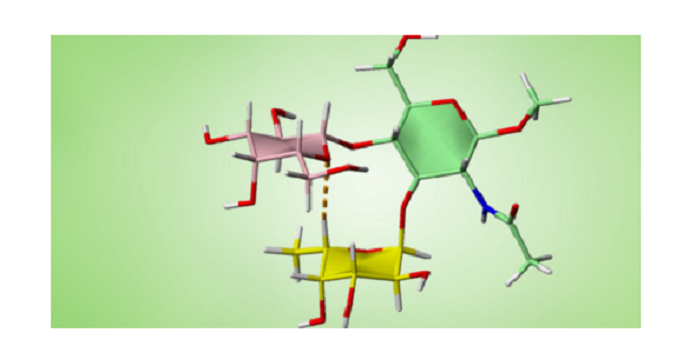An oligosaccharide molecule, an essential molecule in living organisms make up a chain of sugar building blocks. The particle additionally contributes to the insusceptible framework’s capacity to recognize the body’s own particular cells from pathogens or other remote cells.
It usually presents on our surface of blood cells determine our blood group and many other proteins. Many scientists suggest that these sugar molecules were freely mobile and did not form rigid structures. These structures referred as secondary structures found only in DNA and proteins.
In DNA, the molecules form a double helix, and in proteins, partial regions create small surfaces with the structure of the corrugated metal. Scientists are now able to show secondary structures in oligosaccharides, they are more inflexible than imagined.
Research led, Mario Schubert said, “We were able to show that the structure of certain oligosaccharides that contain the basic building block fucose have a characteristic rigidity. We found the structures were more inflexible.”
In this study, scientists discover how the three sugar building blocks in the oligosaccharide are spatially related. They found that the first and third building block are parallel to each other. The middle block is at right angles to the other two.
This structure is actually formed due to a chemical hydrogen bond between the first and third blocks. It comprises three blocks, is a comparatively small-scale molecular unit.
Schubert said, “Until now we assumed that the hydrogen bonds between oligosaccharide were very weak and could, therefore, be neglected.”
“But now, our work shows that certain hydrogen bonds have to be taken into account. As a slight tip of the scales, they can help significantly in forcing the sugar building blocks into a rigid corset.”
“Oligosaccharides with the newly discovered structural pattern are recognized easily by other molecules using the lock and key principle because a rigid, inflexible structure simplifies molecular recognition.”
“This lock and a key principle in oligosaccharides are particularly important in the case of immune system molecules and stem cells. The new findings help to better understand the interactions of such molecules.”
Mostly, scientists use computer programs to discover the three-dimensional structure of molecules. Such programs now need to be upgraded for the new oligosaccharide secondary structural element.
In this case, scientists detected the new structural element by nuclear magnetic resonance spectroscopy in two blood group oligosaccharides and four other oligosaccharides. However, the scientists assume that the structural element also appears in many other cell surface and protein oligosaccharides.
